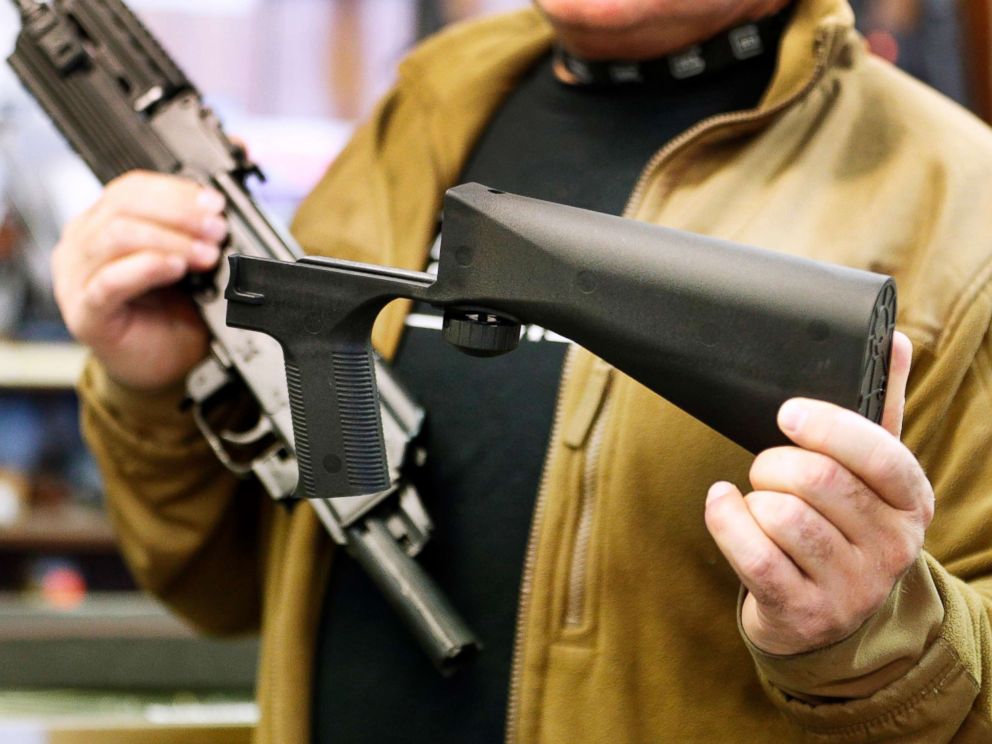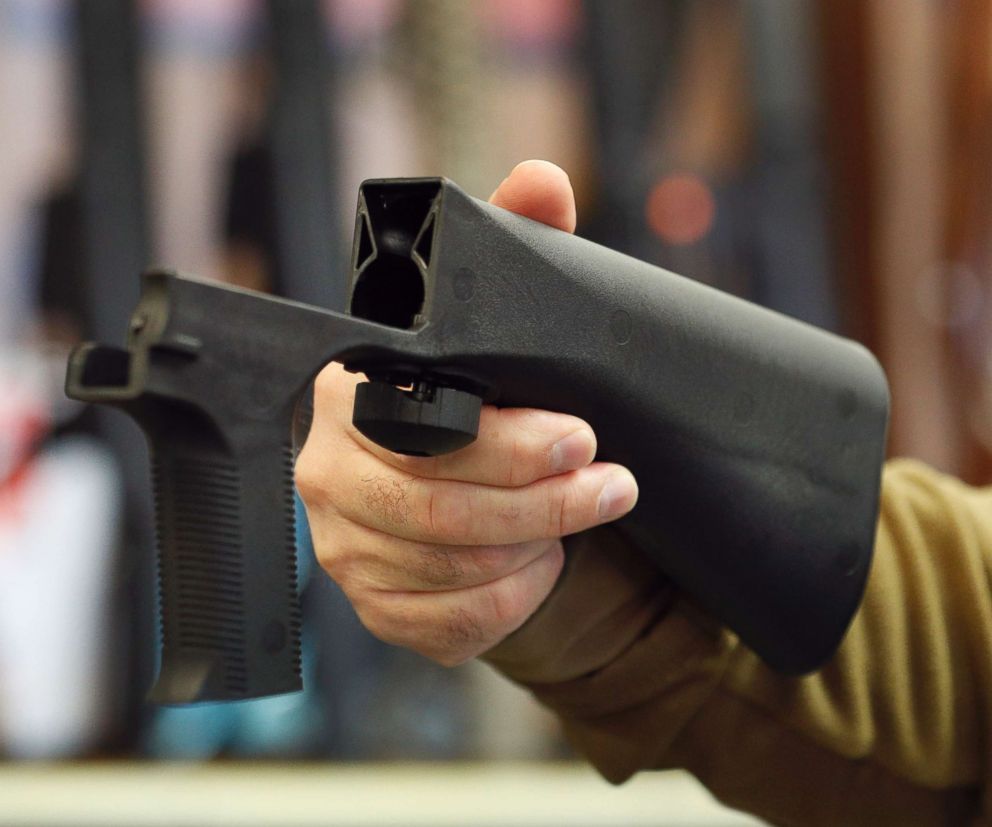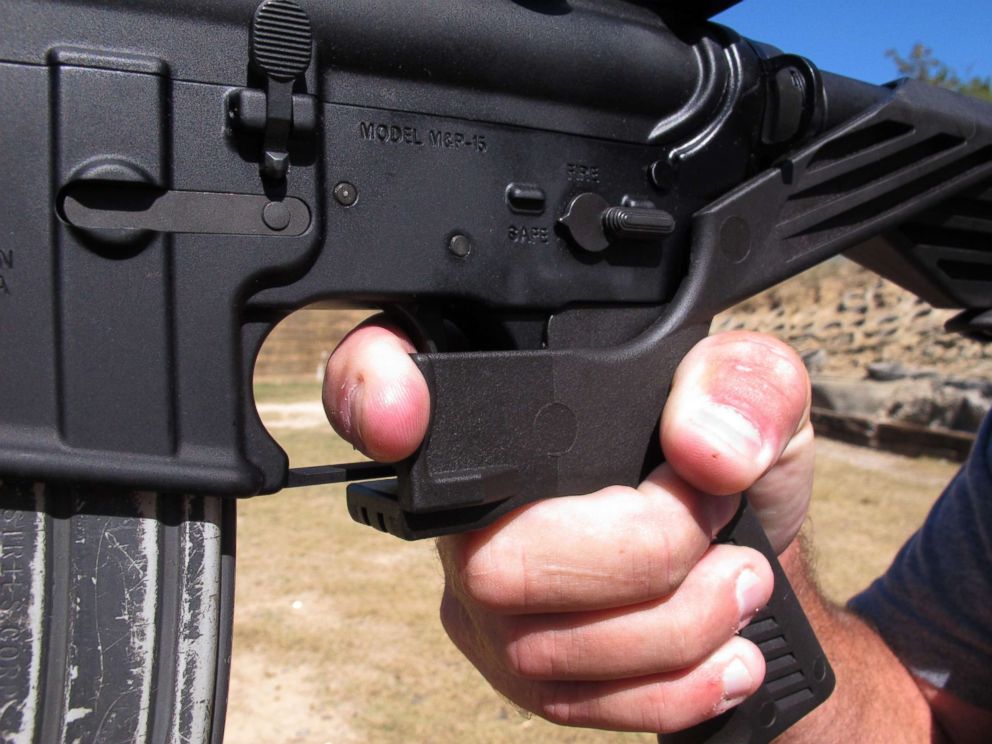ATF can't save bump stock owners from Maryland ban
Why a new Maryland licensing process can't be put into practice.
The state of Maryland has stumbled across a novel way to satisfy gun-control opponents: create a licensing process that cannot be put into practice.
Maryland lawmakers had sought to ban bump stocks, the controversial rifle accessory used in last year’s Las Vegas massacre. But in writing the law, a clause allowing some gun owners to keep them may have backfired. The new law allows bump stocks – and other “rapid-fire trigger activators”— to be owned by people who get special dispensation from the U.S. Bureau of Alcohol, Tobacco, Firearms and Explosives (ATF).
The federal agency, however, has no process or authority to offer that dispensation and, indeed, was never even told of the Maryland law, the ATF told ABC News.

The law allows Maryland residents who apply for authorization by Oct. 1, 2019, when the law takes effect, to keep their bump stocks. After that date, bump stock owners who have not received ATF authorization would be in violation of the law.
But the ATF asked Maryland residents in a public advisory to refrain from filing “applications or other requests for ‘authorization’” from the agency.
The new Maryland law, signed by Republican Gov. Larry Hogan, prohibits “possessing, selling, offering to sell, transferring, purchasing, or receiving” rapid-fire trigger activators in the state of Maryland. Residents who own the devices after the law takes effect Oct. 1, 2019, could face a maximum penalty of three years in prison, a $5,000 fine or both.

A bump stock attaches to a gun to simulate an automatic weapon, capable of significantly increasing the number of rounds it can fire. A gunman using bump stocks opened fire last October on a concert crowd in Las Vegas, killing 58 people and injuring hundreds more in the span of 10 minutes, resulting in the worst mass shooting in modern U.S. history.
The law’s original draft banned bump stocks outright and offered no ATF loophole, Maryland Delegate Lewis Moon, who proposed the measure, said. Instead, he told ABC News, the ATF application was added to appease Republican opposition to the bill.
“The original draft never had a grandfather clause, that was added down the line by the Republicans,” Moon said. “We decided to compromise, to allow residents who currently own these devices to authorize them with the ATF.”

Moon was not in contact with the ATF while drafting the measure and was unaware of the ATF’s statement until contacted by ABC News, he said. He did not know the ATF is unable to accommodate the Maryland law, Moon said.
Still, Moon added, he sees no reason to change the legislation. “Our timeline stands,” he said. “The ATF has until October 1, 2019, to create an application process for current owners of rapid-fire trigger activators.”
Moon reiterated that if the ATF does not create an authorization process, bump stocks and other rapid-fire trigger activators will be banned in the state of Maryland after the law has taken effect, regardless of current ownership.

In a statement, the agency said it “regrets any confusion and inconvenience caused by the provisions of the Maryland statute that mistakenly indicate ATF has the authority to approve possession of devices covered by the statute.”
The agency has no plan to create an authorization process to fit the law’s description, ATF spokesman Frank Kelsey told ABC News.
The ATF is in the process of deciding whether to classify bump stocks as “machine guns,” he said.
After the February massacre at Stoneman Douglas High School in Parkland, Florida, President Donald Trump called for a nationwide ban on bump stocks. U.S. Attorney General Jeff Sessions announced in March that both the Department of Justice and the ATF were in process of reviewing the classification of bump stocks.
If bump stocks are classified as “machine guns,” it would be illegal under federal Law for people to buy or own such devices, even if they are not attached to a firearm.




